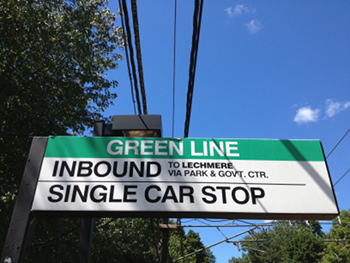Since this is the week of HubSpot’s annual INBOUND conference, it’s an appropriate time to examine some of the differences between inbound marketing and marketing automation.
Of the three traditional pillars of CRM — sales, marketing and customer service — marketing is the fastest growing segment of CRM.
Late last year, Gartner predicted that marketing automation will remain the highest growth CRM segment with a 10.7% compound annual growth rate through 2016.
A testament to the importance of this segment of CRM is the fact that salesforce.com recently paid a whopping $2.5 billion for ExactTarget. With this purchase, salesforce.com acquired a leading email marketing company – but it also a marketing automation company. The latter was due to the fact that ExactTarget had previously acquired Pardot.
The term “marketing automation” has been around since the 1990s. “Inbound marketing” is a newer term, one that was coined by HubSpot’s Brian Halligan in 2005.
The Difference Between Inbound Marketing and Marketing Automation
Inbound marketing is mainly about attracting visitors to your organization’s website and then converting those visitors into new leads. In other words, inbound marketing’s focus is to feed the top of the funnel by producing a lot of attractive content in the form of blogs, social media, video, podcasts and more.
Marketing automation is more about how an organization profiles and communicates with existing leads, prospects and customers. Marketing automation’s focus is moving people who are already in the funnel, through the funnel. The essence of marketing automation is outbound – segmenting, emailing and interacting via social media.
Successful marketing automation vendors, such as Marketo, have been amplifying their inbound marketing messaging. HubSpot, which defined the inbound marketing category, has been amplifying its marketing automation messaging.
In many ways, marketing automation is more mechanical and analytical than inbound marketing. Inbound marketing is as much of a philosophy as it is a technology. The philosophical part is summed up by HubSpot’s current tagline, “Create Marketing People Love.” In other words, stop interrupting people and give them reasons to organically venture in your direction.
Do Organizations Need to Think About Inbound Marketing and Marketing Automation?
While most companies should have a strategy for both marketing automation and inbound marketing, there are cases in which a company only needs to focus on one or the other.
If a value added reseller is provided with a lot of well-qualified leads by their ISV(s), inbound marketing is not as necessary for the VAR as it is for the ISV, which needs to find leads for its channel partners.
For businesses with a seemingly endless stream of referral business, inbound marketing may not currently be a high priority item.
However, as Harvey Mackay suggested in the late 1990’s, perhaps these types of companies should think about digging their well before they’re thirsty.
On the marketing automation front, companies with very short, “one and done” sales cycles may not need to place much importance on marketing automation. For example, duck tour companies such as Boston Duck Tours should not make marketing automation technology a very high marketing priority.
However, with few exceptions, companies would do well to consider both inbound marketing and marketing automation strategies.


